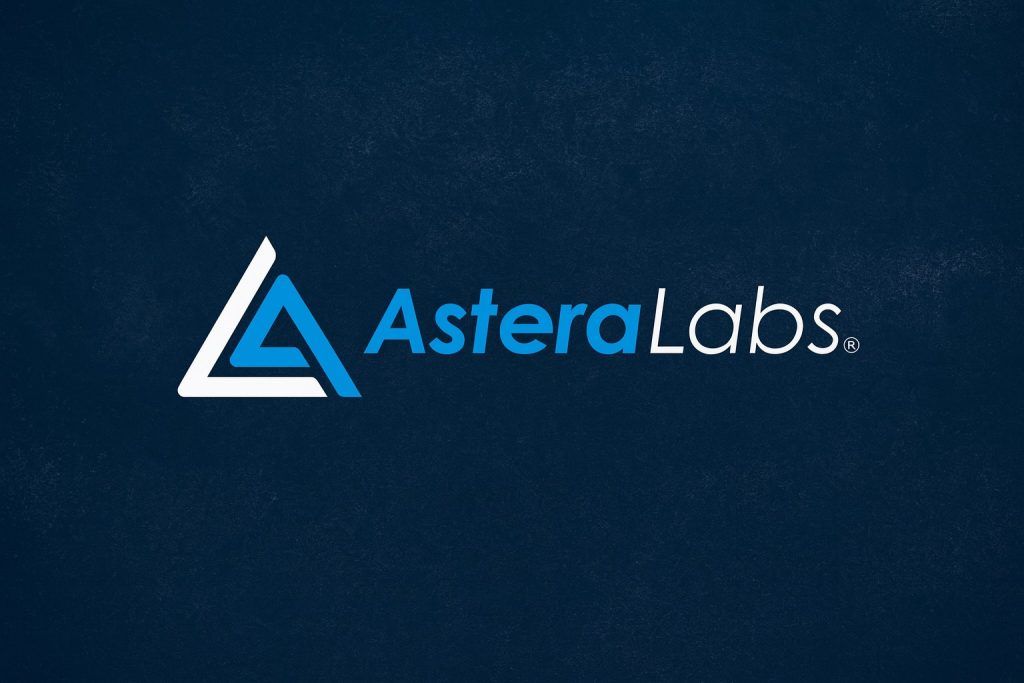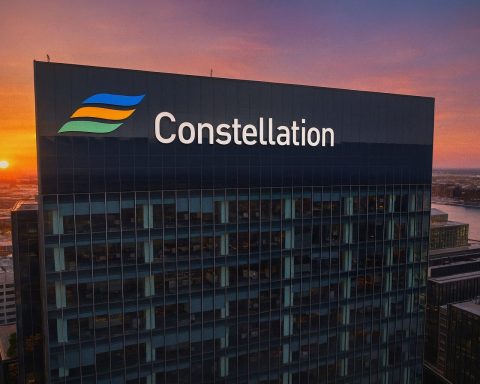- Stock performance: Oklo’s stock (NYSE: OKLO) has exploded in 2025, surging more than 500 % year‑to‑date and hitting a record $146.40 intraday high in early October. Market capitalisation jumped to around $20.67 billion, reflecting a 1,228 % gain over the previous year. Oklo closed on Oct 3 around $142.54 after the rally [1].
- Big catalysts: The U.S. Department of Energy (DOE) selected Oklo for its Advanced Nuclear Fuel Line Pilot Program, under which the company will build three fuel‑fabrication facilities to support its Aurora and Pluto fast‑reactor designs. The DOE also picked Oklo for its Nuclear Reactor Pilot Program, allowing its reactors to progress through DOE authorization instead of the slower Nuclear Regulatory Commission (NRC) process [2]. These initiatives are part of President Trump’s executive orders to accelerate nuclear deployment and restore domestic fuel supply.
- Technology & projects: Oklo’s flagship Aurora Powerhouse is a sodium‑cooled fast reactor rated up to 75 MWe and is designed to recycle used nuclear fuel. Ground-breaking for the first Aurora plant at Idaho National Laboratory (INL) occurred on Sept 22; the design builds on the heritage of the EBR‑II breeder reactor [3]. Oklo is also developing a $1.68 billion spent‑fuel recycling facility in Tennessee, expected to produce 800 jobs.
- Financial snapshot: Oklo remains pre‑revenue and unprofitable. Q2 2025 results showed a GAAP net loss of $0.18 per share, wider than analyst expectations, and operating losses of $28 million with a projected $65–80 million annual cash burn. The company raised $440 million in Q2 through equity offerings, boosting cash reserves to $683 million [4]; analysts expect losses to continue through 2028 [5].
- Valuation & analyst sentiment: Despite the rally, broker consensus remains cautious. MarketBeat reports one strong buy, seven buy, seven hold and three sell ratings, with an average price target near $83–90, implying downside from current levels. Bank of America and Goldman Sachs downgraded Oklo to neutral, citing stretched valuations and a long road to commercial revenue [6]. GuruFocus notes a low Piotroski F‑Score of 3, suggesting operational weaknesses and highlighting insider selling [7].
- Insider & institutional activity: Insiders have taken profits: director Michael Stuart Klein sold 50,000 shares at about $133.76 (~$6.7 million) and another executive sold 41,387 shares at ~$70. Institutional investors hold roughly 85 % of the outstanding shares, and many funds have initiated positions in 2025.
Overview: Why Oklo Matters
Oklo Inc., headquartered in Santa Clara, California, is a high‑profile entrant in the advanced nuclear space. The company went public via SPAC in 2024 and designs micro‑reactors that promise steady, carbon‑free baseload power for data centers, industry and remote communities. Oklo’s reactors are intended to close the fuel cycle by recycling spent nuclear fuel, and the company intends to build, own and operate its powerhouses while selling electricity through long‑term power‑purchase agreements. Oklo’s innovations have attracted high‑profile backers and partnerships, but the company remains pre‑revenue and is burning cash at a rapid pace. Its 2025 rally has been driven mainly by policy tailwinds and investor enthusiasm rather than fundamentals, making it both a fascinating and risky stock to watch.
Recent News (Late September – October 6 2025)
DOE Fuel‑Line Pilot Program selection (Sept 30 – Oct 2)
The biggest catalyst of late September was Oklo’s inclusion in the DOE’s Advanced Nuclear Fuel Line Pilot Program. On Oct 1, the American Nuclear Society (ANS) reported that Oklo, Terrestrial Energy, TRISO‑X and Valar Atomics were conditionally selected to build fuel fabrication facilities under a fast‑track pathway. Deputy Secretary of Energy James P. Danly said the initiative aims to ensure a secure domestic fuel supply, calling a strong nuclear sector a key element of America’s energy security and prosperity. The program allows companies to build and operate pilot fuel lines under DOE authorization, bypassing the more onerous NRC licensing process. Oklo plans to construct three fuel‑fabrication facilities to support its Aurora and Pluto reactors, complementing its plan for a $1.68 billion fuel‑recycling center in Oak Ridge.
Shortly after the announcement, FX Leaders noted that Oklo’s stock surged 10 % to about $146.40, lifting its market cap to $20.67 billion. The article described investor euphoria driven by high‑profile partnerships and the DOE contract but cautioned that Oklo remains unprofitable and relies on heavy capital to scale. GuruFocus similarly reported that shares jumped 11.92 % on the news to around $142.54 [8].
Reactor pilot program and Aurora-INL ground‑breaking (Sept 22 – Oct 1)
Oklo is the only publicly traded company participating in the DOE’s Nuclear Reactor Pilot Program and has three projects selected for acceleration—more than any other participant [9]. On Sept 22, the company broke ground on Aurora‑INL, its first 75‑MWe Aurora Powerhouse at Idaho National Laboratory. ANS reported that the reactor builds on the design and operating heritage of the Experimental Breeder Reactor‑II and that Oklo selected Kiewit Nuclear Solutions as lead constructor [10]. Originally slated for commercial operation in 2027–28, the DOE’s fast‑track process could accelerate the start date to mid‑2026 [11], although no updated timeline has been publicly confirmed. The same article noted that the NRC denied Oklo’s earlier, smaller reactor application in 2022; the new design is significantly larger and will be authorized through the DOE rather than the NRC [12]. Oklo is also pursuing a micro‑reactor pilot with the U.S. Air Force at Eielson Air Force Base in Alaska [13].
Swedish partnership with Blykalla (Sept 30)
On Sept 30, Oklo announced a technology development and funding partnership with Sweden’s Blykalla. According to ANS, the collaboration involves joint work on materials, components, fuel fabrication and licensing; the two companies will share suppliers and jointly pursue research to lower costs [14]. Oklo also committed roughly $5 million to co‑lead Blykalla’s A2 funding round [15]. The partnership expands Oklo’s supply‑chain base and signals its ambition to participate in Europe’s growing advanced‑reactor ecosystem [16].
Market reaction and analyst commentary
The combination of the DOE programs and speculation about surging AI‑driven electricity demand triggered a trading frenzy. FX Leaders observed that after rallying 67 % in September, Oklo’s shares briefly pulled back before roaring back to new highs. The site highlighted investors’ enthusiasm over the $1.68 billion Oak Ridge recycling plant and agreements with the U.S. Air Force and Tennessee Valley Authority. However, it cautioned that the stock’s volatility shows the market’s sensitivity to regulatory developments and funding news.
MarketBeat’s coverage was more skeptical. It noted that Oklo’s consensus rating is “Hold” with an average target price of $83.77. Several analysts—including BTIG Research and Citigroup—have neutral ratings, while BNP Paribas Exane gave an underperform rating with a $14 price target. William Blair is one of the few to rate the stock outperform. More recently, Bank of America and Goldman Sachs downgraded Oklo to neutral, citing excessive valuation and lack of revenue [17]. Barclays, however, maintained an overweight rating with a $146 target according to ts2.tech’s review of analyst commentary [18].
Insider sales and investor positioning
Investor enthusiasm has been tempered by insider sales. MarketBeat reported that director Michael Stuart Klein sold 50,000 shares at $133.76, netting over $6.6 million, while another executive sold 41,387 shares at ~$70. In total, insiders sold 491,387 shares valued at roughly $52.7 million. Despite these sales, institutional ownership remains high at 85 %, with numerous funds—including Clarus Wealth Advisors, Adams Wealth Management and others—opening new positions. GuruFocus cautioned that the stock’s Piotroski F‑Score of 3 indicates potential operational weaknesses and that insider selling should prompt investors to remain cautious [19].
Financial Performance and Outlook
Earnings and cash position
Oklo’s financials illustrate the challenges of commercializing advanced reactors. Q2 2025 results showed no revenue and a GAAP net loss of $0.18 per share—larger than analysts expected and due in part to heavy R&D spending and integration costs from its 2024 acquisition of radioisotope company Atomic Alchemy. The company raised $441.6 million in Q2 via equity offerings, increasing cash and marketable securities to $683 million [20]; this extended its runway but diluted shareholders significantly [21]. Operating losses totaled $28 million in the quarter, and management expects $65–80 million in cash burn for FY2025.
Analysts project ongoing losses through at least 2028 [22]. Oklo must still submit a combined license application (COLA) for the Aurora‑INL site and obtain regulatory approvals for its recycling facility. The company has a 14 GW pipeline of prospective customers, including data‑center operator Vertiv, Liberty Energy and Korea Hydro & Nuclear Power (KHNP) [23], but it has not yet signed definitive power‑purchase agreements. The first revenue from reactor operations is not expected until 2026 at the earliest [24].
Valuation metrics and analyst forecasts
Oklo’s rally has pushed its price‑to‑book ratio above 40, far above typical utility multiples (ts2.tech flagged this as a “bubble” risk). MarketBeat’s data show a consensus average target price around $83–90 with one strong buy, seven buys, seven holds and three sells. Ts2.tech summarized that BofA and Goldman downgraded the stock to neutral citing unrealistic valuations, while Barclays maintained an overweight rating with a $146 target [25] [26]. GuruFocus noted that no GF Value estimate exists yet for Oklo and urged caution due to insider selling and operational risks [27].
Industry and Policy Context
Oklo sits at the nexus of several powerful trends. The AI revolution and growth of data centers are creating enormous demand for reliable, carbon‑free electricity. At the same time, the U.S. is seeking to reduce dependence on Russian and Chinese nuclear fuel, prompting the Biden–Trump administration to support domestic supply chains. The DOE’s pilot programs stem from President Trump’s executive orders (E.O. 14299 and E.O. 14301), which call for fast‑tracking reactor construction and fuel fabrication. Danly said restoring a secure domestic fuel supply is critical to allow advanced reactors to move quickly from design to deployment.
The Aurora Powerhouse stands out because it is designed to recycle spent fuel and operate for up to 20 years without refueling. Oklo’s planned advanced fuel‑recycling facility in Tennessee aims to convert used fuel into fresh fuel—unlocking what ts2.tech described as “energy equivalent to five times Saudi Arabia’s oil reserves” and creating over 800 jobs. Oklo also intends to pursue micro‑reactors for the U.S. Department of Defense and other critical infrastructure [28].
Strategic Partnerships and Pipeline
Oklo has been active in forming partnerships to build a vertically integrated business:
- Blykalla (Sweden) collaboration: Joint R&D on materials, supply chain and licensing; Oklo to invest ~$5 million [29].
- Atomic Alchemy acquisition (2024): Provides radioisotope production capabilities and access to the DOE pilot program; the subsidiary’s Versatile Isotope Production Reactor is being accelerated alongside Aurora [30].
- Aurora Fuel Fabrication Facility at INL: Oklo is seeking DOE authorization to fabricate the initial core for Aurora‑INL and plans to obtain five metric tons of high‑assay low‑enriched uranium (HALEU) from the EBR‑II reactor [31].
- Vertiv, Liberty Energy & KHNP partnerships: Agreements to explore deployment of Aurora reactors to data centers, oil fields and international markets [32].
- U.S. Air Force micro‑reactor: Notice of intent to pilot a micro‑reactor at Eielson Air Force Base in Alaska, part of the DOD’s Advanced Nuclear Power for Installations program [33].
Analysis: Opportunity vs. Risk
Oklo has quickly become a poster‑child for the next generation of nuclear power. The company offers a compelling vision: compact, fast‑spectrum reactors that recycle spent fuel, supported by federal fast‑track programs, a large pipeline of potential customers and strong policy momentum. Its market valuation, however, already reflects enormous expectations. With no revenue until at least 2026, heavy R&D spending and reliance on future DOE approvals, the company faces execution risk and financing risk. The DOE’s pilot programs demonstrate political support but do not provide funding; Oklo must shoulder construction and operation costs. Analysts warn that valuations may be disconnected from underlying fundamentals [34], and insider selling underscores the need for caution.
Conclusion
As of Oct 6 2025, Oklo embodies both the excitement and the challenges of the nuclear renaissance. Its inclusion in multiple DOE pilot programs, groundbreaking at Idaho National Laboratory and expansion into fuel recycling and international partnerships position it as a leader in advanced reactors. The stock’s meteoric rise reflects investor enthusiasm for clean‑energy solutions, but valuations appear stretched relative to the company’s pre‑revenue status, significant cash burn and regulatory hurdles. For investors and energy watchers, Oklo will remain a high‑beta play on the future of nuclear energy—promising enormous potential if its technology proves viable, yet fraught with risks typical of early‑stage innovators.
In summary, OKLO’s 2025 narrative intertwines explosive stock performance with high-stakes innovation. The DOE’s selection of Oklo for both advanced fuel-line and reactor pilot programs catalyzed a 1,200 % share price surge, yet the company remains pre-revenue and dependent on future licensing and construction milestones. Analysts caution that valuations appear stretched, pointing to heavy cash burn and insider selling [35].
A critical takeaway is that Oklo’s story is as much about U.S. energy policy as it is about corporate fundamentals. By championing closed-cycle micro‑reactors and a $1.68 billion recycling facility, Oklo aligns with national efforts to secure domestic nuclear fuel and power AI-era data centers. While partnerships and government backing provide a supportive backdrop, investors must weigh this against the long road to commercialization and execution risk. This duality—visionary potential versus developmental hurdles—defines Oklo’s place in the nuclear renaissance.
References
1. www.gurufocus.com, 2. www.ans.org, 3. www.ans.org, 4. coincentral.com, 5. coincentral.com, 6. investorsobserver.com, 7. www.gurufocus.com, 8. www.gurufocus.com, 9. www.ans.org, 10. www.ans.org, 11. www.ans.org, 12. www.ans.org, 13. www.ans.org, 14. www.ans.org, 15. www.ans.org, 16. www.ans.org, 17. investorsobserver.com, 18. ts2.tech, 19. www.gurufocus.com, 20. coincentral.com, 21. coincentral.com, 22. coincentral.com, 23. ts2.tech, 24. ts2.tech, 25. investorsobserver.com, 26. ts2.tech, 27. www.gurufocus.com, 28. www.ans.org, 29. www.ans.org, 30. www.ans.org, 31. www.ans.org, 32. ts2.tech, 33. www.ans.org, 34. investorsobserver.com, 35. www.gurufocus.com










